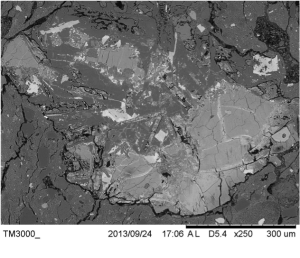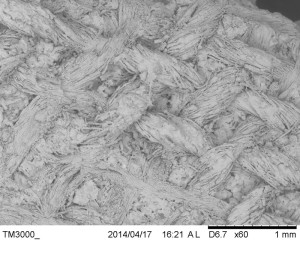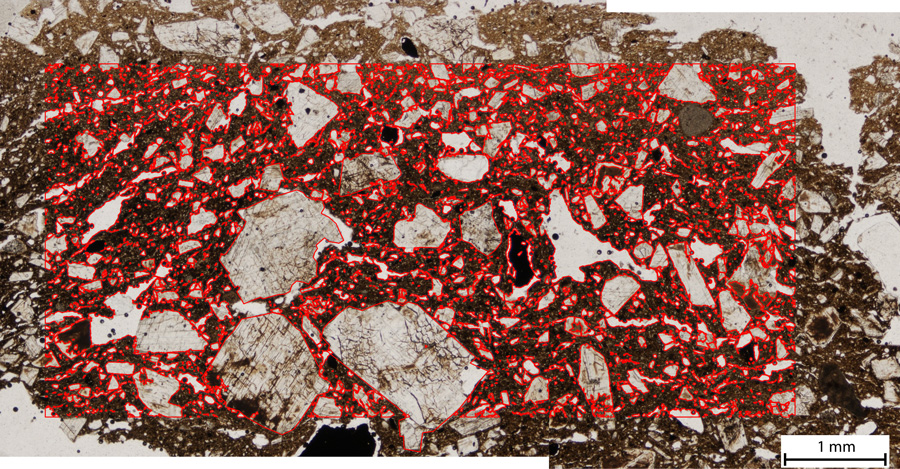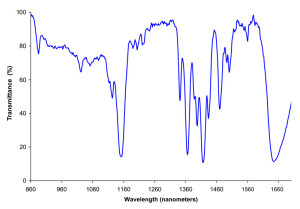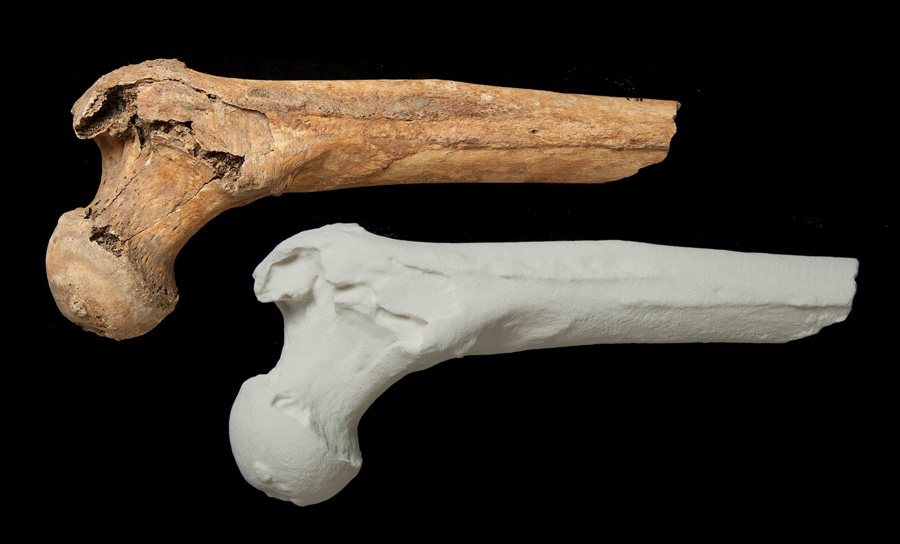Our lab can help with the analysis and reporting of results as well as their interpretation. We can identify unknown materials and quantify them, providing you with the data you need to help interpret the role of artefacts or groups of artefacts within their archaeological context. Contact us and let us know how we can be of service.
Scanning Electron Microscopy – Energy Disperse X-ray Spectroscopy (SEM-EDX): An SEM uses electrons to image an object. Since the wavelength of electrons is higher than that of visible light, a far greater magnification is possible using an SEM when compared to a light microscope. The SEM in our lab is also fitted with an EDX which can be used to determine the chemical composition (Elements from Boron-Uranium are detected) of an object at a single spot or over a larger area. The EDX can also be used to make chemical element maps of samples.
The SEM used in our Lab is a Hitachi TM 3000. The EDX used in our lab is an Oxford SwiftED 3000.
Optical Microscopy: Our polarising microscopes can analyses specimens in both transmitted and reflected light allowing for the precise determination of silicate and ore minerals along with other microtopographical features. Our microscopes are fitted with the latest Leica cameras allowing us to create beautiful high resolution images. We use digital image analysis software (imageJ) to quantify the microtopography of samples.
Energy Dispersive X-ray Fluorescence Spectrometer (EDXRF): EDXRF is a non-destructive technique for determining the qualitative or quantitative elemental composition of metals, glass, stone, ceramics, and other inorganic materials. The method can detect elements in the range of Na-U, at concentrations in the parts per million (ppm) range for some.
The EDXRF system in our laboratory is an oxford instruments ED 2000. The instrument has a nitrogen cooled Si (Li) detector.
Fourier Transform Infrared Spectroscopy (FTIR): The arrangement of atoms in organic and inorganic molecules can be determined by their absorption of infrared light. Measuring this absorption produces a spectrum of peaks and troughs characteristic of a particular molecule.
The FTIR used in our laboratory is a Perkin Elmer Spectrum Two.
3-D Printing: Our labs offer bespoke 3-D printing services. We operate a ZPrinter 650 3-D printer.
3-D Laser Scanning and Photogrammetry: In addition to 3-D printing, our labs offer access to the latest NextEngine Scanners, which are precise to 25 microns. We can make quick and cost-effective high resolution scans of bones, ceramics, and other artefacts. In addition, we utilise the latest software and purpose built tools for high resolution 3-D object capture by photogrammetry.
The combination of our scanning and printing equipment make us one of the few full service 3-D facilities in the North East.
X-Ray Diffraction (XRD): X-ray diffraction is a rapid analytical technique that identifies the mineralogical phases present in an inorganic sample, rather than the elemental composition. X-rays bombard the sample and are scattered depending on the crystal structure of the mineral phases present. Samples are powdered and their bulk mineralogical composition is determined. One archaeological application of XRD is to gain a better understan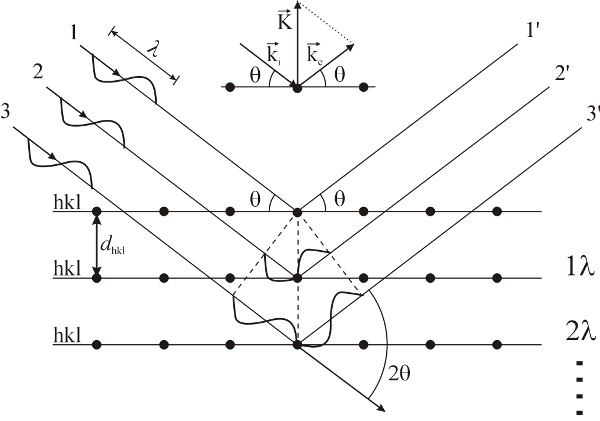 ding of the firing temperature associated with ceramic objects, by using the instrument to identify temperature dependent changes in mineral phases.
ding of the firing temperature associated with ceramic objects, by using the instrument to identify temperature dependent changes in mineral phases.
Access to the X-ray diffractometer is through XRDur (Durham X-ray Centre).
Inductively Coupled Plasma Atomic Emission and Mass Spectrometry (ICP -AES and -MS): ICP -AES and -MS is a type of spectrometry that is capable of accurately quantifying the bulk chemical composition of a sample. ICP is more sensitive than EDXRF, but analysis is more involved. ICP-MS can detect trace elements at concentrations of parts per billion. The overall chemical signature and the presence of trace elements are used in archaeology to provide information about the source materials used for glass, metal, ceramic, and stone objects, helping to understand production and exchange.
Access to the ICP -AES and -MS facilities can be accessed through the Arthur Holmes Trace Elemental and Isotope Laboratories at Durham University.




